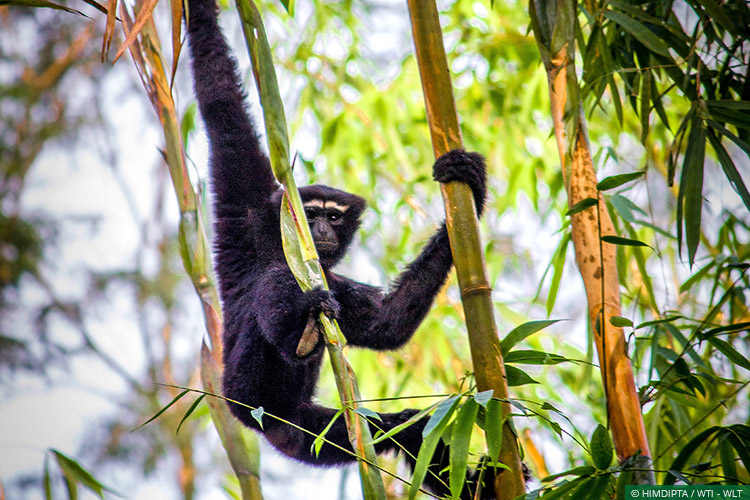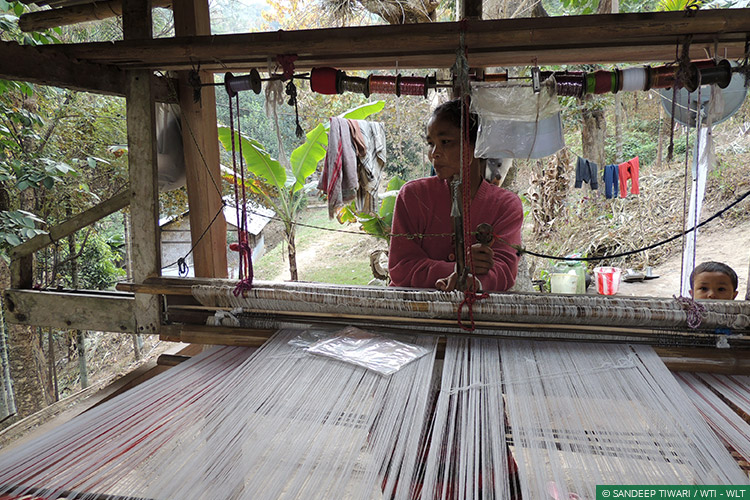Project Info
Project Description
Undulating over an area of 8167 sq km, the Garo Hills in the north-east Indian state of Meghalaya support an incredibly rich biodiversity, boasting some 85 species of mammals, 206 species of birds, 62 species of reptiles, 14 species of amphibians and over 124 fish species.
The Garo Hills are part of the larger Meghalaya elephant landscape that includes the Garo Hills Elephant Reserve spread over 3500 sq km, the Nokrek Biosphere Reserve, three Protected Areas (Balpakram NP, Siju WLS and Nokrek NP) and five elephant corridors, together supporting about 800-1000 elephants.

The Selbagre Hoolock Gibbon Reserve in the Garo Hills, Meghalaya
This incredible habitat is part of the Indo-Burma Biodiversity Hotspot, unfortunately among the most threatened of the Earth’s biodiversity hotspots. Age-old agricultural practices like slash-and-burn cultivation (known as jhumming) have fragmented the forests, hindering wildlife movement and increasing human-wildlife conflict, especially with elephants.
Only 7-8% of the forested area in the Garo Hills is under the control of the Meghalaya Forest Department; the remaining area is owned by local communities under the management and jurisdiction of the Garo Hills Autonomous District Council (GHADC).
Wildlife Trust of India (WTI) and World Land Trust (WLT), in partnership with the GHADC and the state forest department, have been working with these communities for over a decade now. Our overarching aim is to connect the fragmented forest patches located between the West Garo Hills and Nokrek National Park, with a view to establishing an unbroken wilderness link with Balpakram National Park. This network of forest patches forms the backbone of the region’s biodiversity and has been designated the Garo Green Spine.
STRATEGY
Run through our Wild Lands division, the Garo Green Spine Conservation project aims to protect the canopies, corridors and catchments of the Garo Green Spine. The idea is to increase the total area under conservation by: (a) legally notifying larger lands for wildlife conservation, (b) restoring jhummed fallow lands, (c) sensitising local communities about the importance and benefits of wildlife conservation through campaigns, (d) optimising social and biodiversity benefits by strengthening livelihood and employment opportunities, (e) reducing the people’s dependency on forests through the use of fuel efficient stoves on a pilot basis to reduce fuel wood extraction, and (f) sharing experiences, learnings and success models with the public through workshops and meetings.
Activities are currently executed across two areas: Project Area and Project Zone. The Project Area consists of the main forested areas to be conserved (the Garo Green Spine), including areas that have potential to be conserved through their being notified as Village Reserve Forests (VRFs). The Project Zone comprises the villages and other areas to be addressed through green livelihoods and community welfare activities.
The project is also involved in addressing a wider range of aspects including recognising a key VRF in the Garo hills as a ‘Citrus gene pool’, development and intensification of horticultural activities in the area, supporting the preservation of traditional Garo culture, and leveraging the meaningful participation of women in all phases and activities.
[acx_slideshow name=”Garo Green Spine”]
In terms of its core strategy, the project follows the Community Securement Model wherein community-owned lands are set aside through easements or bilateral benefit-sharing models. To ensure that communities receive equitable benefit that must be greater than the ‘lost opportunity cost’ of the lands they have set aside as VRFs, the project has for over a decade undertaken several confidence building measures that have created employment opportunities for villagers and helped them strengthen their livelihoods and improve their lifestyle.
A broad scope of project activities could be described thus:
- Creation of Village Reserve Forests based on (a) community participatory discussions, and (b) resolutions from villages on incentive schemes for the designation of areas for VRFs, thus bringing in more areas under protection
- Micro-planning for green livelihood alternatives and their implementation, including imparting necessary skills for livelihood improvement
- Creation of VRF committees for the management and protection of VRFs
- Monitoring of VRFs and secured elephant corridors
- Protection of the ‘Citrus gene pool’ bank
- Promotion of scientific methods of settled cultivation through trainings and exposure visits
- Preservation and promotion of the traditional culture of the Garo tribes
- Provision of technical support to the GHADC

Capacity-building training to tribal women in activities such as weaving is a crucial part of the project’s green livelihoods component
HIGHLIGHTS
Corridor Securement // Declaration of Village Reserve Forests
The project has been instrumental in securing two important elephant corridors in the region: the Siju-Rewak Corridor and the Rewak-Emangre Corridor. Both the corridors are being monitored on a regular basis for animal movement.
In all, local communities have thus far voluntarily set aside 2822.3 hectares of land for conservation – notified as 17 Village Reserve Forests by the GHADC. This has been a very innovative approach for conservation where community has owned the conservation efforts, and more importantly where both the community and local government have come forward to secure safe passage for wildlife.
Habitat Restoration
The project had also undertaken habitat restoration work through plantations and Assisted Natural Regeneration (ANR) to elevate the quality of three VRFs in 2009-10. The number of plantations as per the 2015 annual plantation count is 145,026 covering 105 hectares of area.
PARTNERS: World Land Trust, Garo Hills Autonomous District Council
PROJECT LEAD: Sunil Kyarong (sunil@wti.org.in)











